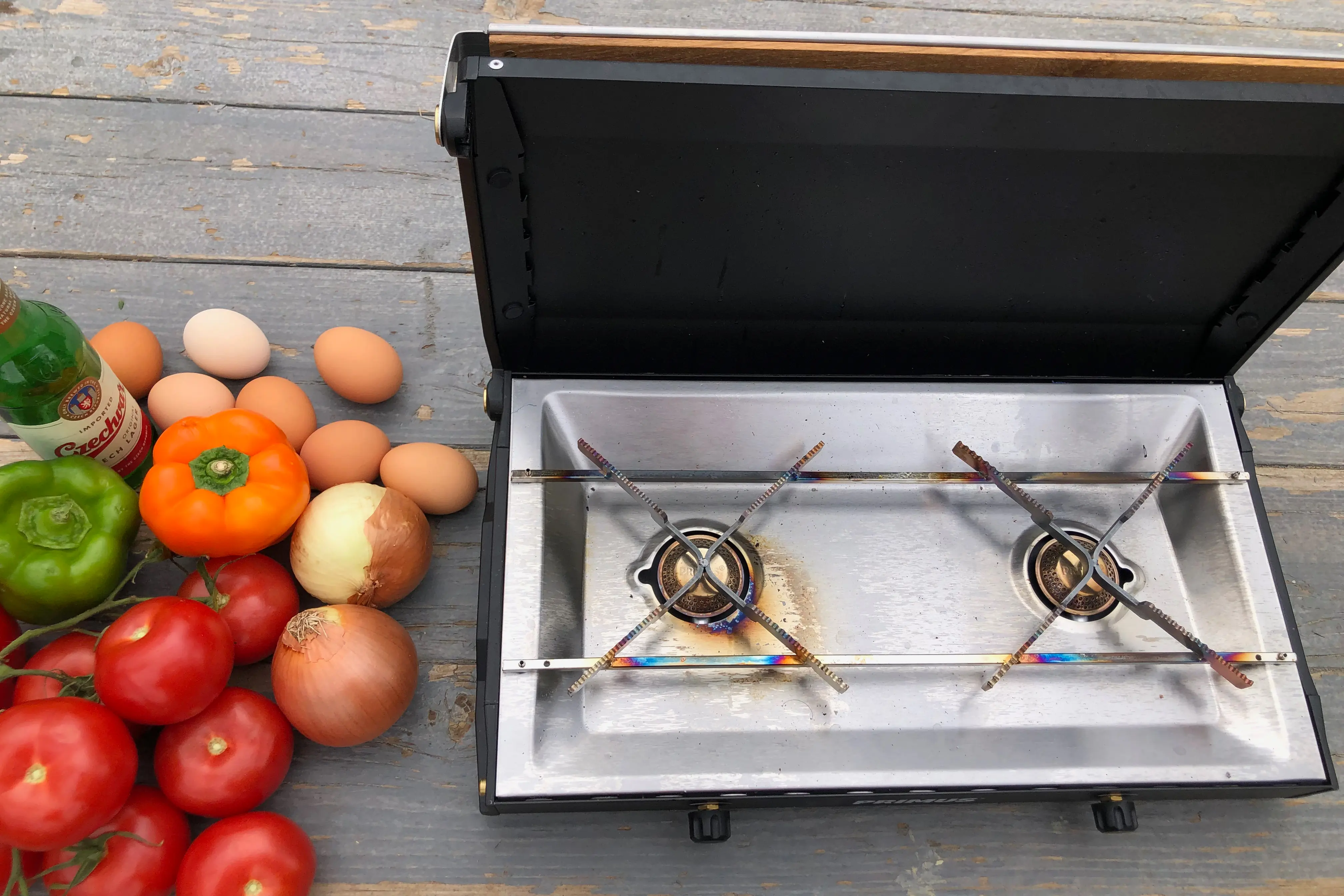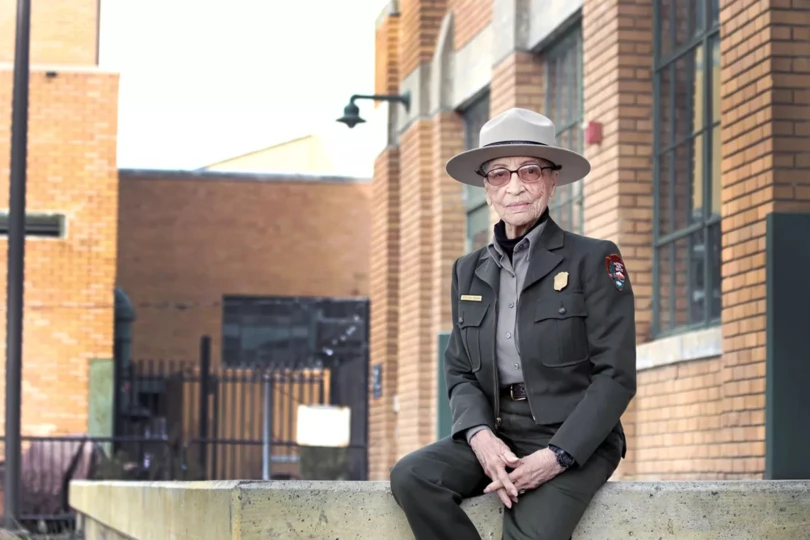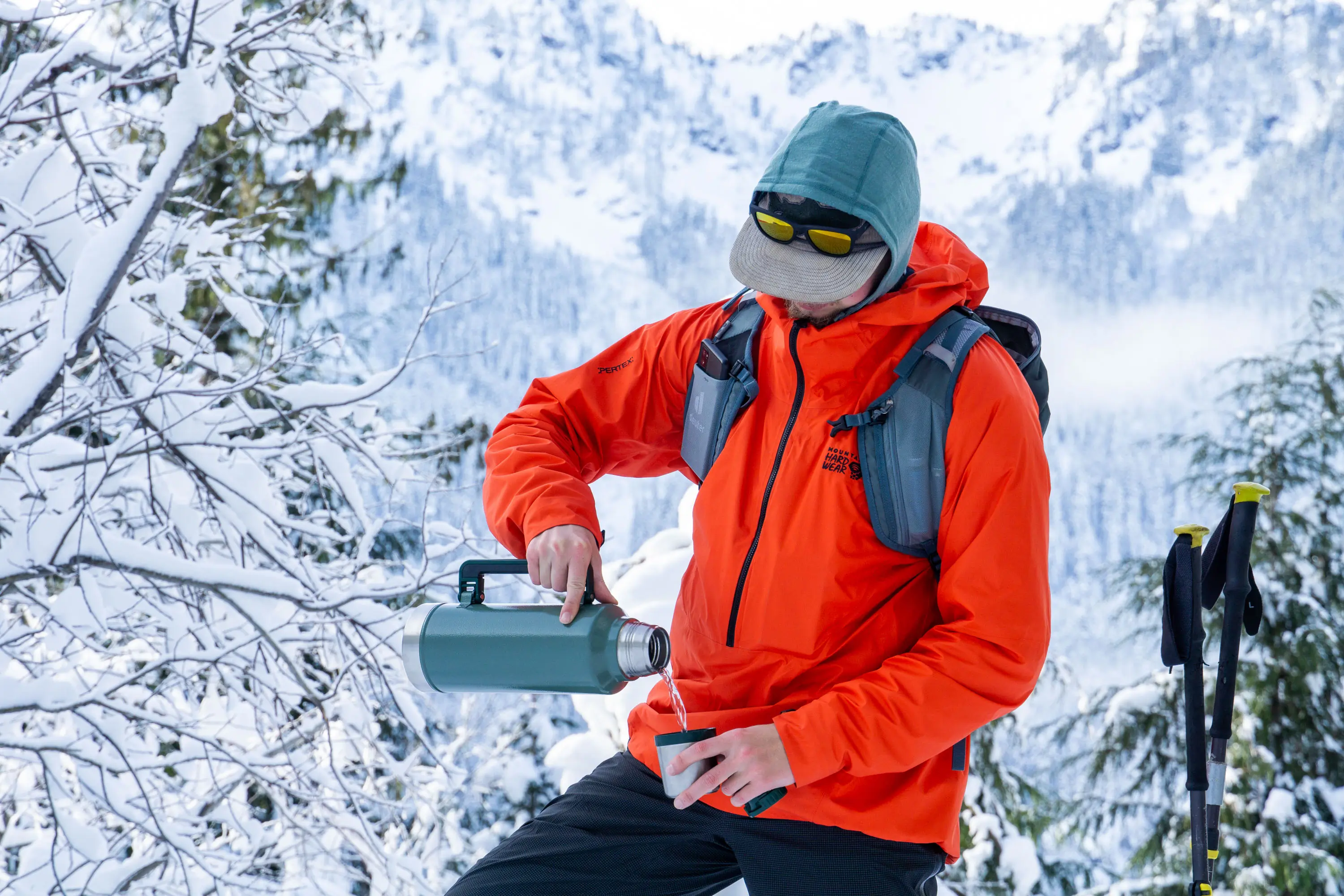Picture this: it’s a beautiful spring day in April. The weather has been warm, there’s a light breeze. The days are getting longer. The backyard is calling your name. It’s the perfect setting for an outdoor, build-your-own pizza party.
On pizza night in my house, the kids get to decide exactly what toppings they want, and they get to add those toppings to the pizza themselves. Between running around in the yard and having a go on the rope swing, they pop in and build their own pizza. In days of yore (last winter), we cooked the pizzas on the Traeger. And if the weather was really bad, we used the kitchen oven.
But this spring, we tried the new accessory for our Solo Stove, the Pi Fire.
In short: Here’s why the Pi Fire is a fantastic cooking contraption and backyard addition not just for families, but for anyone who loves to cook outside.
Pros
- Social cooking
- Easy to manage fire and pizza
- Tasty pizza results
- S’mores for dessert
Cons
- Dedicated attendance of fire and pizza while cooking
- Only cooks one pizza at a time
- Pizza can get sooty
- Bulky (if traveling with the kit)
Solo Stove Pi Fire Review
What Is Pi Fire?
The Pi Fire is a three-legged Lunar Lander-esque pizza oven that docks perfectly in the rim of the three largest fire pits from Solo Stove: the Ranger, Bonfire, and Yukon. Note: You do need to get the right size Pi Fire to match your fire pit size. It does a great job of cooking pizza and provides that incredible wood-fired cooking taste. That being said, this method requires the cook to be vigilant of the fire — and the pizza itself — while cooking.
Testing the Pi Fire: Making Pizza
The major adjustment to logistics we had to make was to be OK with the idea of dinner being on a rolling timeline. With my Traeger, we can cook two to three larger pizzas at a time and have everything ready to all sit at the table and eat together. We have the Bonfire 2.0 size Solo Stove, which is 19.5 inches in diameter.
This means the compatible Pi Fire comes with a 14-inch pizza stone, so we’re only able to cook one pizza, up to about 12 inches in diameter at a time. I did make one attempt to cook two smaller pizzas for the kids at the same time. While it worked, it was awkward to rotate each of them as they cooked.
However, the pizzas do cook fast when the heat is properly maintained. For the times we were just cooking for our family of four, we got the kids’ pizzas done first and since they tended to eat slower (take a bite or two, run around, and come back for another bite), we were all eating as a family by the time Mama’s and Papa’s pizzas were done. Throw in some salad and it works perfectly.
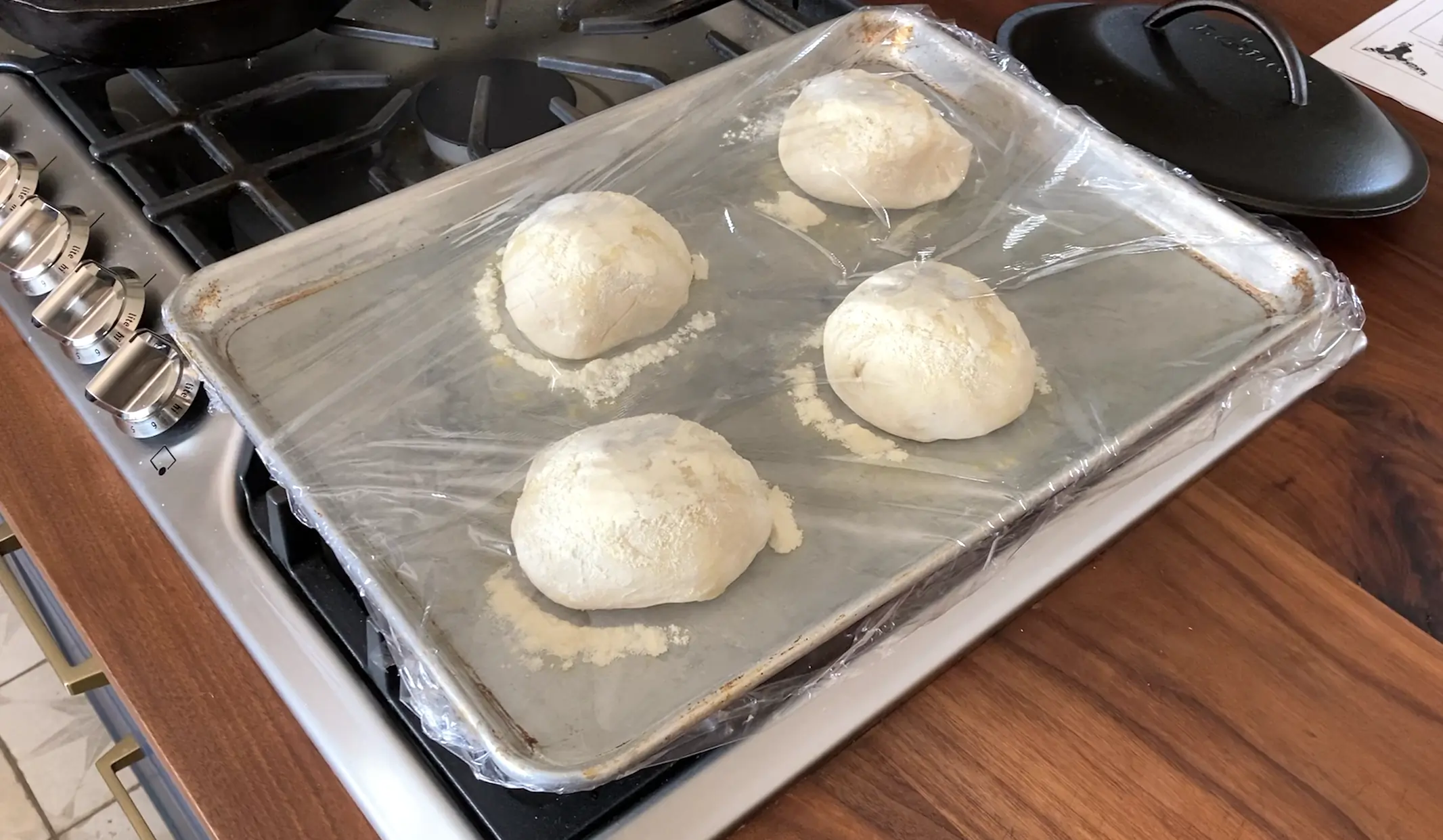
We also hosted some friends recently — two other families — to have dinner and talk about an upcoming ski hut trip. It was a little crazy sitting in sunny 70-degree weather in Boulder talking about a ski trip happening just a fortnight away. Again, we rounded up the kids just long enough for them to prep their own pizzas and then dash back to playing.
As a pizza came out of the Pi Fire, we called that kid over who came, took a bite, and dashed off again. The parents were able to sit around the Bonfire to chat, nibble on salad, and enjoy drinks while waiting for each of the ‘zas to roll out. It really is a great setup for a variety of usages. And it really ups the hands-on fun and ambience of any backyard dining experience.
Testing Notes & Results
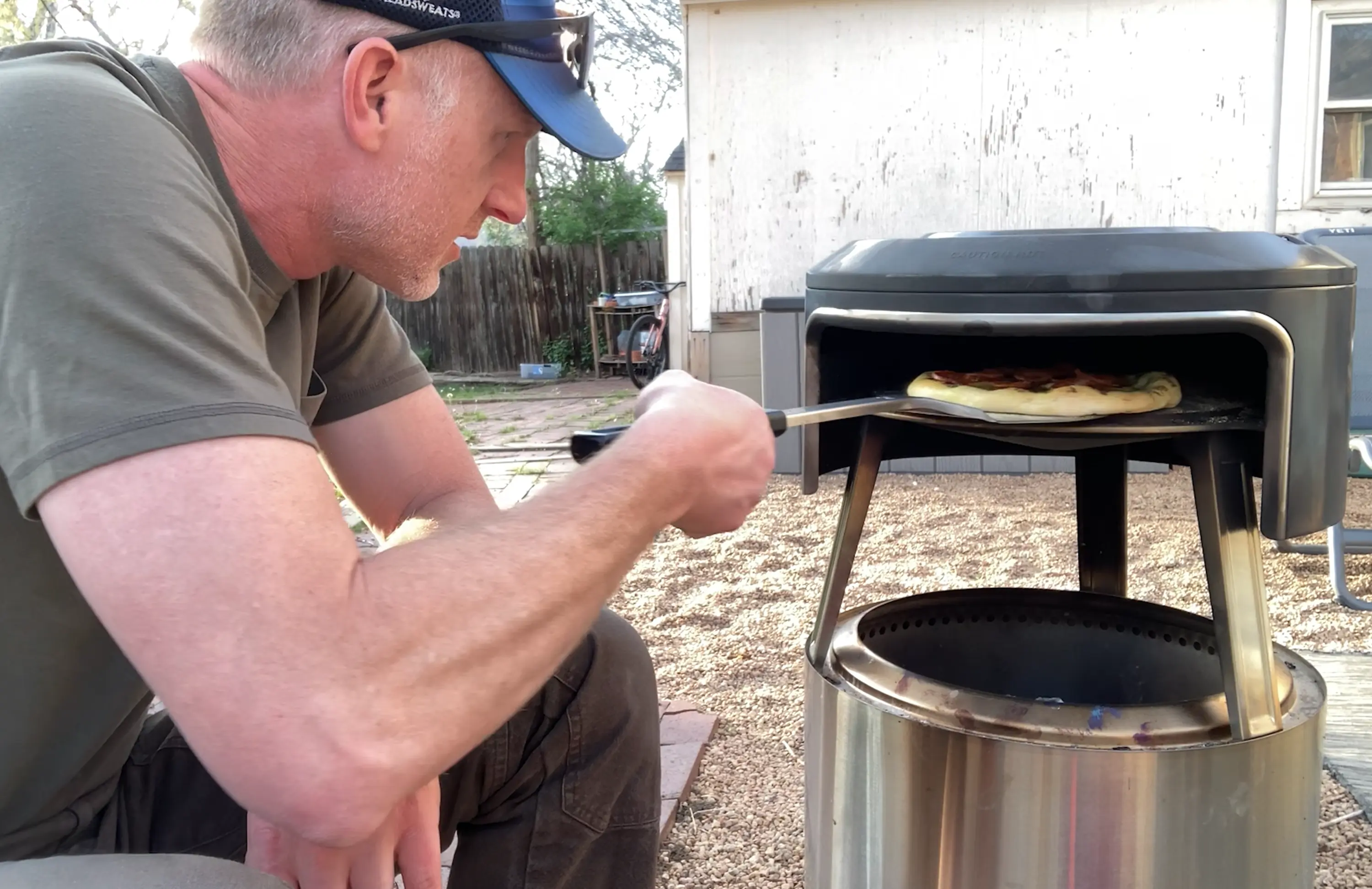



The biggest lesson I learned while using the Pi Fire was that it needs constant attention. That, and be sure to not overstoke the fire. While getting lost in chatting with friends, the fire burned down and the pizza in the oven was taking forever to cook. I chucked a bunch of small logs into the fire (it’s easy to add wood when you need it) and it stoked up quickly, with flames pummeling the underside of the Pi Fire.
The pizza in the slot was burned well beyond what my 9-year-old daughter would tolerate. My wife quickly cloned another ‘za and once properly cooked, my daughter was none the wiser. I tried the overcooked pie and it was fine in the middle — I didn’t bother with the blackened crust.
After this incident, I pulled up a seat to be right at the mouth of the Pi Fire to manage the logs going onto the fire and to rotate the pizza as it cooked. The other risk of overstoking the fire is the soot factor. Big yellow flames burning freshly added wood can darken the pizza with a thin layer of soot.
Two possible solutions to the soot: Solo Stove does sell firewood, which might be better seasoned than the wood I was recovering from trees in my backyard. Also, Solo Stove has a pellet-burning insert, which might make the temperature of the fire easier to manage, or at least more consistent.
With the fire burning underneath the cooking chamber, I was hopeful that I wouldn’t have to rotate the pizza, as is needed in a traditional wood-fired oven where the pizza is cooked next to the fire. But alas, the opening where you insert the pizza allows for enough heat to escape — I still had to rotate. When we cook on our grill, we can set and forget until it’s done.
Maybe Solo Stove will come up with some sort of Lazy Susan device to constantly rotate while the pizza is cooking.
In Comparison
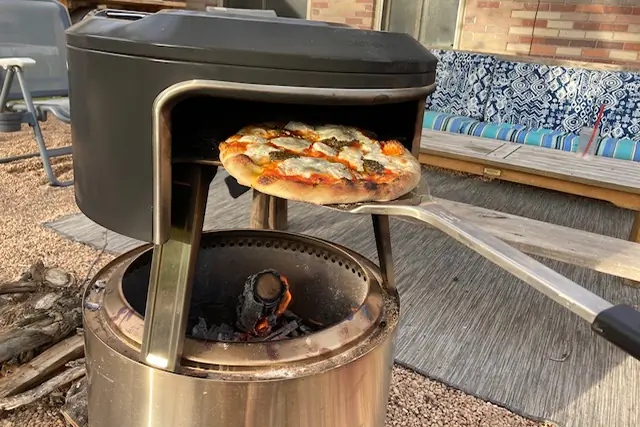



We’ve cooked pizza using a number of methods and the Solo Stove Pi Fire is one of the best for ease, flavor, and versatility. Maybe even, especially versatility. We tried Solo Stove’s Pi — the standalone pizza oven. It cooked pizza great, but to get the woodfired taste, the process of cutting chunks of wood down small enough to fit in the burn chamber was very tedious.
With the Pi Fire, it’s easy to just drop regular cuts of wood into the fire pit below. Solo Stove even has a pellet-burning insert, which we haven’t tried yet.
The Traeger makes cooking pizza simple, about as simple as popping it into the kitchen oven. The Traeger is very easy to start, and the pizza doesn’t need watching while it’s cooking. We found the wood-fired flavor to be about equally as good as the Pi Fire.
Also, the Traeger avoids the risk of any excess soot. Of course, with the Traeger, you get a smoker and can cook all kinds of other stuff. But, one thing you can’t do — at least not in the fun, traditional sense — is s’mores. You can get a small Traeger for $530. Or the portable version, the Ranger, for $450. On the other hand, the Pi (wood-burning only) costs $625, but at this writing, it was on sale for $440.
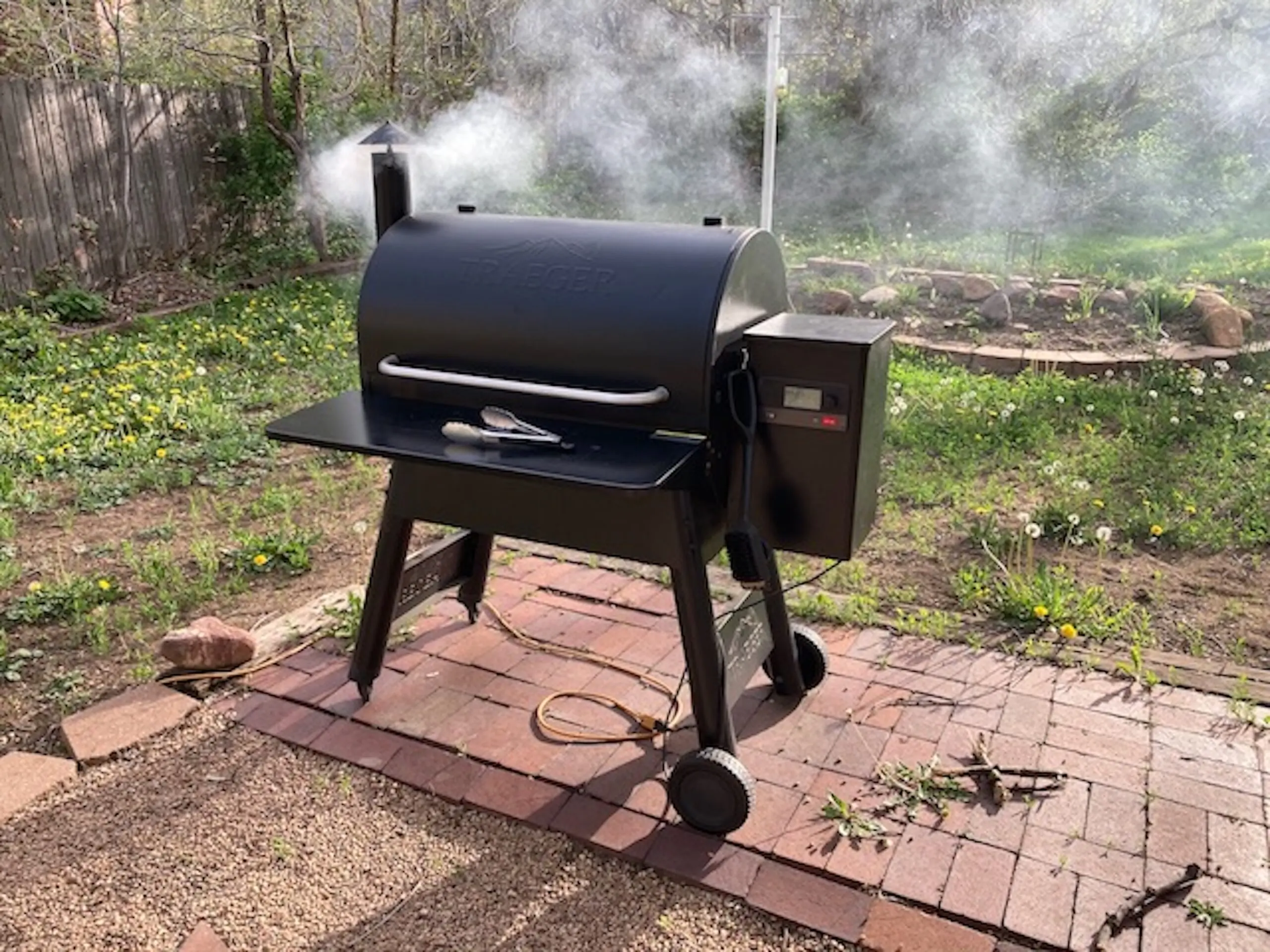



The cheapest way to get the Pi Fire going is with Solo Stove’s smallest fire pit, called the Ranger. It’s 15 inches in diameter and normally costs $300, but is currently on sale for just $200.
The Ranger-size Pi Fire is normally $270 ($200 on sale). All up, $400 for the basics if the sale is still on. I do recommend getting the Pi Fire and Tools combo (details below), which will cost a bit extra. Our test model was the Bonfire-size pit, 19.5 inches in diameter; with the Pi Fire and tools combo, it would cost about $585 on sale.
Unless you love to cook pizzas (and other oven-baked dishes — we’re thinking garlic knots and bread) and know you will use this a lot, the price could be a turnoff. But at the end of the day, it’s pretty comparable with other backyard cooking setups (like a Traeger grill).
Accessories




If you’re brand new to pizza making and don’t have a pizza peeler or turner, I recommend the tool kit combo when buying the Pi Fire. This bumps the price around $50. The gloves and carrying case are nice.
I used the thermometer the first time I cooked with this kit, but I haven’t really bothered with it since. If you already have a pizza peel because you’re pizza nerds like us, be sure at the very least to get one of the pizza turners to rotate the pizza while it’s cooking.
All of the other accessories do add various degrees of convenience, but aren’t necessary.
Solo Stove also offers the basic ingredients for making pizza. The Neapolitan Artisan Pizza Box ($185, on sale for $155) comes with a dozen 9-ounce pizza dough balls, each of which makes one 12-inch pizza. And, it comes with a good proportion of sauce, cheese, and pepperoni. The ingredients and dough were high-quality; there’s only a small price bump here for a very appreciable convenience.
Of course, if you want to source ingredients and a broader variety of toppings on your own, you can skip the kit and save. My only beef with this kit is the massive styrofoam box it comes in to keep the ingredients frozen and preserved while shipping.
Conclusion




The Pi Fire is an incredibly fun way to do pizza night at home or while on the road (though, the fire pit and the Pi Fire do take up a lot of room when traveling). The logistics of starting and maintaining the fire are easy. Solo Stove offers all the basic quality ingredients to make delicious pizzas in their optional “kits,” as well as the essential accessories to manage the pizza before, during, and after cooking.
And who can forget dessert? Once the pizzas are done cooking, you’ve eaten, and the fire settles into a glowing bed of coals, simply lift the Pi Fire from the fire pit (with gloves). Then, get out the roasting sticks. These 36-inch, dual-prong, two-part, stainless steel roasting sticks from Solo were a welcome accessory that made s’mores a snap.
Overall, the Pi Fire is a great way to level up your backyard outdoor cooking game.



